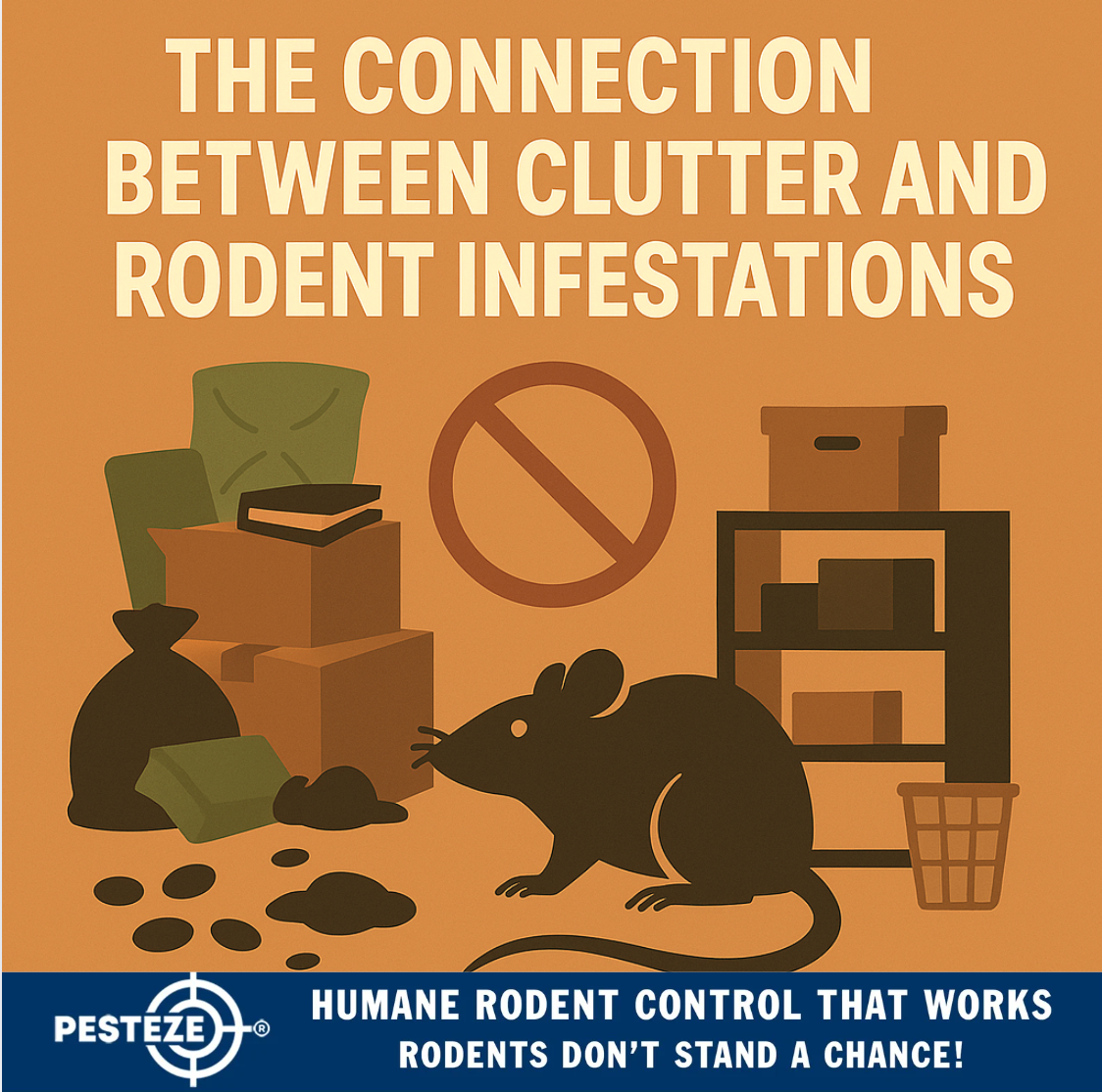THE CONNECTION BETWEEN CLUTTER AND RODENT INFESTATIONS

THE CONNECTION BETWEEN CLUTTER AND RODENT INFESTATIONS
SUMMARY
Cluttered spaces provide hiding spots, nesting material, and food access that make homes more attractive to rodents. Learn how clutter contributes to infestations and how to prevent it.
FEATURES
-
Hiding Spots: Boxes, piles, and storage create rodent shelters.
-
Nesting Material: Paper, fabric, and debris fuel nest building.
-
Food Access: Clutter often conceals crumbs and unsecured food.
-
Difficult Inspections: Clutter hides droppings and damage signs.
-
Increased Risk: Overcrowded spaces make infestations harder to control.
-
Decluttering Solutions: Organization reduces rodent harborage areas.
DESCRIPTION
Clutter plays a direct role in attracting and sustaining rodent infestations. Piles of boxes, unused items, and crowded storage areas create ideal hiding spots for rodents. These spaces allow mice and rats to move undetected, making infestations harder to identify until the problem has grown significantly.
Beyond providing shelter, clutter often contains materials that rodents can use to build nests. Paper, cardboard, old clothes, and fabric scraps are especially appealing for rodents looking to create warm, insulated nests for breeding. When these items are left in basements, attics, or garages, they become perfect resources for infestation growth.
Food access is another factor closely linked to clutter. Hidden crumbs, pet food, or improperly sealed dry goods can accumulate in cluttered corners, behind storage bins, or under furniture. Because rodents only need small amounts of food to survive, even minor spills or forgotten items can sustain them.
Clutter also makes inspections and cleaning more difficult. Rodent droppings, gnawed materials, or grease marks along walls can remain unnoticed when piles of items obscure visibility. This delays intervention and allows infestations to escalate.
The risk is compounded in homes where clutter is excessive or in storage-heavy areas like basements, garages, and attics. Overcrowded spaces limit access for traps and make professional pest control efforts more challenging.
Decluttering is one of the most effective prevention strategies. Regularly organizing and removing unused items, storing belongings in sealed plastic containers instead of cardboard, and maintaining open, clean spaces significantly reduce rodent harborage opportunities.
By addressing clutter, homeowners not only improve cleanliness and safety but also remove one of the primary factors that attract and sustain rodent infestations.
- Saharsh Bansal


Comments 0